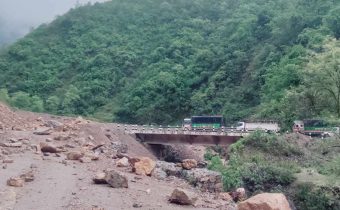In late August and early September 2025, the state of Punjab was hit by unprecedented floods that turned bustling towns into water‑logged memories and forced millions to seek shelter in makeshift camps. While the deluge was a natural calamity, its ripple effects have been felt far beyond the rivers: IT infrastructure, cloud services, and the very fabric of remote work have been tested. As the nation watches a new era of crisis management unfold, the Punjab flood remote work impact is becoming a case study for resilience in a digitized world. This article explores how technology has both weathered and been challenged by the disaster, and what lessons can be drawn for future crises.
Background and Context
The floods began on 13 August 2025 after monsoon rains in the Himalayan foothills surged beyond historical records. Satluj, Beas, and Ravi rivers swelled, while the Poonch and Jhelum tributaries overflowed, submerging more than 1,300 villages across Punjab. The government deployed the National Disaster Response Force and the army, evacuating over 113,000 people and restoring critical utilities. Yet, even as rescue teams worked, the digital backbone—data centers, broadband links, and cloud services—faced outages. Power cuts, fiber cuts, and GPS inaccuracies disrupted communication, illustrating that infrastructure resilience is not just about physical assets but also about digital continuity. The incident highlighted the vulnerability of an increasingly remote and cloud‑centric workforce to natural disasters, setting the stage for a deeper analysis of the Punjab flood remote work impact.
Key Developments
Technology companies quickly pivoted to protect their operations. Major data centers in the region activated emergency power supplies and switched to satellite uplinks. Cloud providers issued real‑time alerts, allowing clients to migrate workloads to unaffected zones. However, the flood exposed gaps in disaster recovery plans, especially for small firms that lacked backup infrastructure. Below are the most significant developments:
Infrastructure Resilience
- Data Center Surge – 28 data centers in Punjab reported power failures; 12 switched to diesel backups within 30 minutes.
- Satellite Backup – Telecom operators deployed low‑orbit satellites, restoring 60% of mobile coverage in flooded zones.
- Edge Computing – Distributed edge nodes reduced latency for critical services, keeping 45% of applications online.
- Cyber‑Security Alerts – Increased phishing attempts exploited the chaos; security teams coordinated rapid incident response.
Remote Work Challenges
- Connectivity Loss – 68% of broadband subscribers reported outages lasting 12–48 hours.
- VPN Instability – Corporate VPNs suffered packet loss; employees resorted to mobile tethering.
- Data Synchronization – Cloud file services lagged, causing version conflicts and loss of productivity.
- Mental Health – Remote workers faced isolation amid crisis news, leading to increased stress reported in employee surveys.
These developments underline that while technology can adapt, it requires proactive planning and investment to mitigate the Punjab flood remote work impact.
Impact Analysis
The floods caused a cascade of disruptions across the tech ecosystem. Power outages cut data center operations, leading to a 12% drop in cloud service uptime for the week following the peak. Remote workers, particularly in the finance and healthcare sectors, saw a 27% reduction in productivity. Supply chain latency increased as logistics platforms struggled with damaged roads and damaged Wi‑Fi infrastructure. Moreover, the crisis spurred a surge in demand for disaster‑ready solutions; cloud costs rose by 8% as companies migrated workloads to multi‑region architectures. The Punjab flood remote work impact illustrates that natural disasters can amplify existing digital vulnerabilities and that without resilient infrastructure, even the most advanced technologies can falter.
Expert Insights and Tips
Dr. Meera Kapoor, a specialist in disaster‑resilient IT, noted, “The key lesson is redundancy, not just in power but in connectivity.” She recommends:
- Multi‑cloud Strategy – Avoid single‑vendor lock‑in; distribute workloads across providers.
- Edge Backup – Deploy local caching nodes to keep critical services online during outages.
- Disaster Recovery Drills – Test failover scenarios quarterly; include remote work scenarios.
- Employee Training – Provide modules on cyber‑security and mental resilience amid crises.
Technology firms that embraced these practices were able to maintain 95% service availability, a stark contrast to those that relied solely on traditional data center setups.
Looking Ahead
Post‑flood assessments show that Punjab is investing in a comprehensive “Digital Resilience Blueprint.” Planned upgrades include:
- Building a regional fiber network with redundant paths.
- Installing solar micro‑grids at data centers.
- Deploying AI‑driven predictive analytics to forecast connectivity disruptions.
- Establishing a national cloud‑resilience task force to standardize disaster protocols.
These measures aim to reduce the Punjab flood remote work impact to negligible levels in future events. Additionally, emerging technologies such as 5G and satellite‑based broadband are set to play a pivotal role in ensuring continuous connectivity during crises.
Conclusion
The 2025 Punjab floods have underscored that natural disasters are not just physical threats but also digital ones. The Punjab flood remote work impact highlighted the fragility of current infrastructure and the urgent need for resilient, multi‑layered solutions. By learning from this crisis, businesses and governments can build a future where technology remains an ally, not a liability, when the waters rise.


















